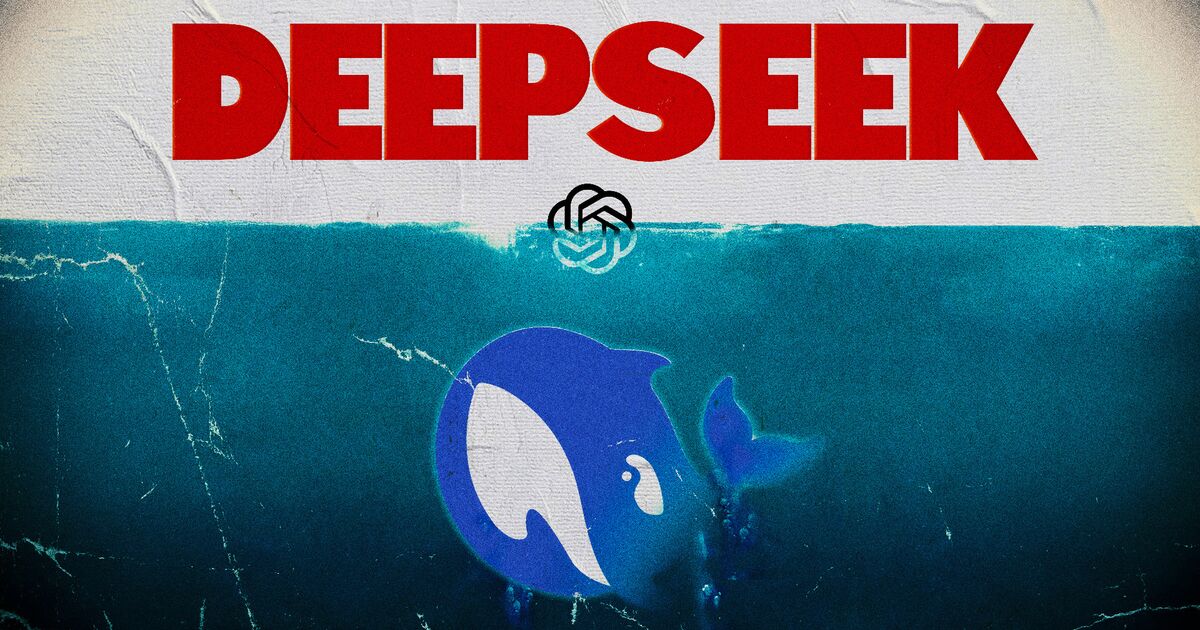Deepseek Helps You Achieve Your Desires
 Through the dynamic adjustment, DeepSeek-V3 retains balanced professional load during training, and achieves higher performance than models that encourage load steadiness via pure auxiliary losses. Because of the effective load balancing technique, DeepSeek-V3 keeps a very good load stability during its full training. Per Deepseek, their model stands out for its reasoning capabilities, achieved through revolutionary training strategies such as reinforcement learning.
Through the dynamic adjustment, DeepSeek-V3 retains balanced professional load during training, and achieves higher performance than models that encourage load steadiness via pure auxiliary losses. Because of the effective load balancing technique, DeepSeek-V3 keeps a very good load stability during its full training. Per Deepseek, their model stands out for its reasoning capabilities, achieved through revolutionary training strategies such as reinforcement learning. 
 In a groundbreaking (and chilling) leap, scientists have unveiled AI programs capable of replicating themselves. I remember going up to the robotic lab at UC Berkeley and watching very primitive convnet primarily based techniques performing tasks way more basic than this and incredibly slowly and sometimes badly. Basic Architecture of DeepSeekMoE. Compared with DeepSeek-V2, an exception is that we moreover introduce an auxiliary-loss-free load balancing technique (Wang et al., 2024a) for DeepSeekMoE to mitigate the efficiency degradation induced by the hassle to ensure load stability. For Feed-Forward Networks (FFNs), deepseek ai china-V3 employs the DeepSeekMoE structure (Dai et al., 2024). Compared with conventional MoE architectures like GShard (Lepikhin et al., 2021), DeepSeekMoE makes use of finer-grained experts and isolates some consultants as shared ones. Combined with the framework of speculative decoding (Leviathan et al., 2023; Xia et al., 2023), it could possibly considerably accelerate the decoding speed of the model. This repetition can manifest in varied methods, corresponding to repeating certain phrases or sentences, producing redundant information, or producing repetitive constructions within the generated text.
In a groundbreaking (and chilling) leap, scientists have unveiled AI programs capable of replicating themselves. I remember going up to the robotic lab at UC Berkeley and watching very primitive convnet primarily based techniques performing tasks way more basic than this and incredibly slowly and sometimes badly. Basic Architecture of DeepSeekMoE. Compared with DeepSeek-V2, an exception is that we moreover introduce an auxiliary-loss-free load balancing technique (Wang et al., 2024a) for DeepSeekMoE to mitigate the efficiency degradation induced by the hassle to ensure load stability. For Feed-Forward Networks (FFNs), deepseek ai china-V3 employs the DeepSeekMoE structure (Dai et al., 2024). Compared with conventional MoE architectures like GShard (Lepikhin et al., 2021), DeepSeekMoE makes use of finer-grained experts and isolates some consultants as shared ones. Combined with the framework of speculative decoding (Leviathan et al., 2023; Xia et al., 2023), it could possibly considerably accelerate the decoding speed of the model. This repetition can manifest in varied methods, corresponding to repeating certain phrases or sentences, producing redundant information, or producing repetitive constructions within the generated text.
• At an economical price of solely 2.664M H800 GPU hours, we full the pre-coaching of deepseek ai-V3 on 14.8T tokens, producing the currently strongest open-source base mannequin. • Through the co-design of algorithms, frameworks, and hardware, we overcome the communication bottleneck in cross-node MoE training, reaching close to-full computation-communication overlap. Under this constraint, our MoE training framework can nearly achieve full computation-communication overlap. The fashions can then be run on your own hardware utilizing tools like ollama. Its efficiency is comparable to leading closed-supply models like GPT-4o and Claude-Sonnet-3.5, narrowing the gap between open-source and closed-source fashions in this domain. • Code, Math, and Reasoning: (1) DeepSeek-V3 achieves state-of-the-artwork performance on math-related benchmarks amongst all non-long-CoT open-supply and closed-supply fashions. • On top of the efficient architecture of DeepSeek-V2, we pioneer an auxiliary-loss-free technique for load balancing, which minimizes the performance degradation that arises from encouraging load balancing. • We design an FP8 mixed precision training framework and, for the first time, validate the feasibility and effectiveness of FP8 coaching on a particularly massive-scale mannequin. The first problem is naturally addressed by our training framework that makes use of massive-scale knowledgeable parallelism and knowledge parallelism, which ensures a big measurement of each micro-batch.
ARG occasions. Although DualPipe requires preserving two copies of the mannequin parameters, this does not considerably increase the memory consumption since we use a large EP measurement during training. GPT-three didn’t help long context home windows, but when for the second we assume it did, then each further token generated at a 100K context size would require 470 GB of memory reads, or around 140 ms of H100 time given the H100’s HBM bandwidth of 3.Three TB/s. POSTSUPERSCRIPT refers to the illustration given by the main mannequin. Within the remainder of this paper, we first present a detailed exposition of our DeepSeek-V3 mannequin architecture (Section 2). Subsequently, we introduce our infrastructures, encompassing our compute clusters, the coaching framework, the support for FP8 coaching, the inference deployment technique, and our solutions on future hardware design. For each token, when its routing decision is made, it would first be transmitted via IB to the GPUs with the same in-node index on its goal nodes. The primary drawback that I encounter throughout this venture is the Concept of Chat Messages.
In case you loved this article and you would love to receive details concerning deep seek (linktr.ee) generously visit the webpage.
